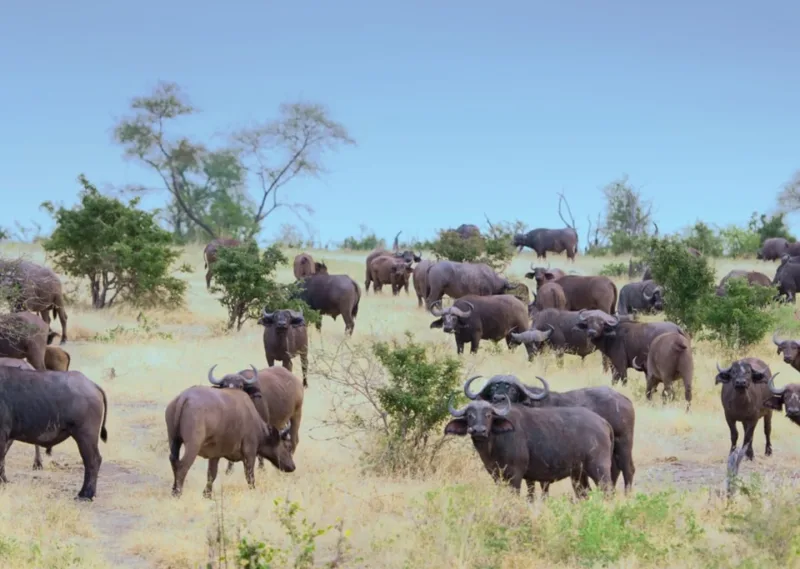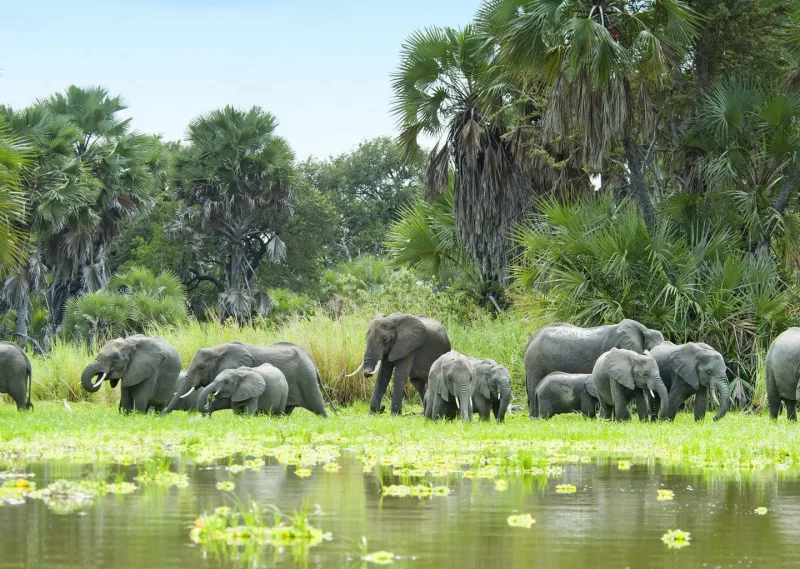Nyerere National Park
(formerly Selous Game Reserve)
Why Visit Nyerere National Park
Africa’s Largest National Park:
Nyerere covers an enormous 30,000+ km², making it larger than many countries. Its sheer size means endless wilderness to explore — and fewer crowds compared to northern parks.
Incredible Wildlife Diversity:
The park is home to huge herds of elephants, prides of lions, giraffes, zebras, buffalo, wildebeest, and rare species such as the African wild dog. The Rufiji River supports thousands of hippos and crocodiles, offering some of the most dramatic river-based wildlife viewing in Africa.
Unique Boat Safaris:
Unlike most Tanzanian parks, Nyerere allows boat safaris along the Rufiji River and its many channels and lakes. Here you can watch elephants drinking at the banks, hippos snorting in the water, and colorful birds flying overhead — a truly different safari perspective.
Unspoiled & Untamed:
Nyerere remains one of the wildest areas in Africa. With fewer lodges and limited visitor numbers, safaris here feel authentic and adventurous, perfect for travelers who want to experience nature without the crowds.
Birdwatcher’s Paradise:
With over 440 recorded species, from giant kingfishers and fish eagles to rare bee-eaters and carmine rollers, Nyerere is heaven for bird lovers.
Best Time to Visit
June – October (Dry Season):
This is the best time for wildlife viewing. As water sources shrink, animals concentrate along the Rufiji River, creating dramatic scenes of elephants, lions, buffalo, and crocodiles sharing the same areas. The dry season also means clear skies, cooler nights, and excellent conditions for game drives and boat safaris.
November – March (Green Season):
The rains transform the park into a lush green paradise. This is the best time for birding, as migratory species arrive and the park bursts with life. The scenery is stunning, with vibrant flowers and dramatic skies. However, some roads may be muddy, so access can be trickier.
April – May (Heavy Rains):
Some camps close due to heavy rains, but for adventurous travelers, this is when the park is at its wildest and most untouched.
👉 Overall: If your priority is big game viewing and dramatic river action, visit in the dry season (June–October). If you love green landscapes, fewer tourists, and birding, the green season (November–March) is perfect.
Safari Experience
Game Drives:
Classic morning and evening drives across varied landscapes — open savannah, miombo woodlands, and riverine forests. Expect encounters with elephants, lions, leopards, and packs of wild dogs.
Boat Safaris on the Rufiji River:
This is the park’s signature experience. Imagine drifting silently past pods of hippos, watching crocodiles bask on the banks, and elephants coming down to drink — all while surrounded by flocks of storks and kingfishers. It’s a safari you can’t experience in Serengeti or Ngorongoro.
Walking Safaris:
Explore the bush on foot with an expert guide. You’ll notice the smaller details — animal tracks, medicinal plants, insects, and bird calls — that you miss from a vehicle. It’s thrilling and gives you a deeper connection to the wilderness.
Fly-Camping:
For the adventurous, lightweight tents are set deep in the bush, letting you sleep under the stars and listen to the sounds of nature all around. It’s one of the purest forms of safari.
Cultural Experiences:
Visits to nearby villages give travelers the chance to learn about local life and traditions, adding cultural depth to the safari experience.




